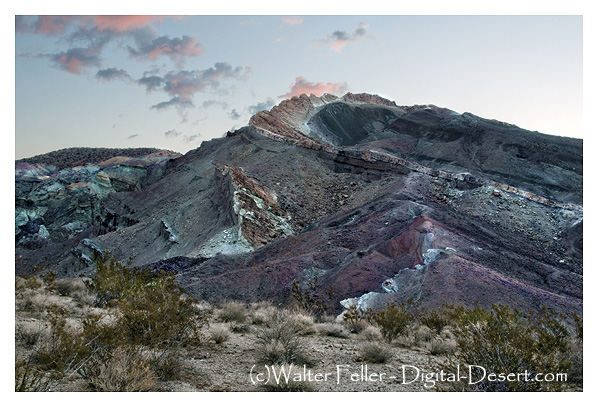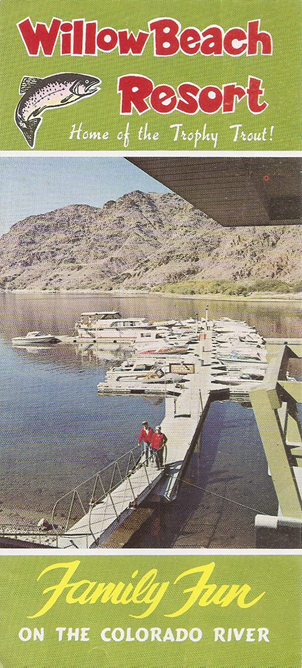Month: September 2023
How Death Valley Got Its Name — S1E1
Gold – Silver in Them Thar’ Hills!
A lost party, the Bennett, Arcane, and Wade families had taken a different route trying to traverse the mountain ranges. The Wade family, traveling behind the others, were the only ones to find their way out of (today’s) Death Valley with their wagons intact. The Bennett and Arcane families felt they could not continue after suffering terrible hardships. Two members left on foot and returned with food and supplies to rescue the others. Actually, only one party member died from starvation and lack of water and was buried there. Legend has it that as the party crested over the rim on their way out of that forbidden valley, Juliet Brier, a woman noted the following in her diary, “Goodbye Death Valley.” (NOTE: From Irving Stones book, “Men to Match My Mountains”
Gold – Silver in Them Thar’ Hills!
https://mojavedesert.net/military/fort-irwin-07.html
The naming of Death Valley, located in Eastern California, is a topic of interest and speculation. This vast desert valley, known for its extreme heat and arid conditions, has a name that evokes a sense of foreboding and danger.
Contrary to popular belief, the name “Death Valley” was not given due to the number of deaths occurring within its borders. In fact, the valley’s name can be traced back to a group of pioneers who experienced a challenging journey through this unforgiving landscape in the mid-19th century.
In 1849, a group of gold prospectors, known as the “Lost 49ers,” ventured into what is now Death Valley in search of riches. However, their journey quickly turned into a struggle for survival. Many groups perished along the way when facing scorching temperatures, lack of water, and hostile terrain.
The survivors of this ill-fated expedition gave the valley its name. As they emerged from the treacherous landscape, they reportedly looked back and proclaimed, “Goodbye, Death Valley!” This proclamation, filled with relief and gratitude for having survived the ordeal, stuck, and the name Death Valley became etched in history.
Over time, the name Death Valley symbolizes this unique geographical feature’s harsh and inhospitable nature. The valley’s extreme temperatures, with summer highs regularly exceeding 120 degrees Fahrenheit, make it one of the hottest places on Earth. Its arid conditions and sparse vegetation add to its desolate and foreboding reputation.
Despite its ominous name, Death Valley is not entirely devoid of life. Various species of plants and animals have adapted to the harsh conditions, carving out a fragile existence amidst the barren landscape. The valley also boasts stunning geological formations, such as the towering Mesquite Flat Sand Dunes and the iconic Badwater Basin, the lowest point in North America.
Death Valley National Park’s unique beauty and extreme environment attract visitors worldwide. The park offers opportunities for hiking, camping, and exploring the arid expanses. However, caution is always advised due to the valley’s harsh conditions and proper preparation.
In conclusion, the naming of Death Valley is rooted in the experiences of the pioneers who first traversed its challenging terrain. While the name may evoke a sense of danger and foreboding, it serves as a testament to the resilience of the human spirit and the ability to adapt to even the harshest environments.
Exploring Ludlow’s History
https://digital-desert.com/ludlow-ca/
Introduction:
Ludlow, California, a small unincorporated town along Route 66, has a fascinating history stretching back to the late 19th century. Looking into Ludlow’s captivating past sheds light on its significant role in California’s development and the nation.
Early Settlement:
Ludlow’s story began in the 1870s when it served as a crucial railway stop along the Atlantic and Pacific Railroad. The town was named Ludlow in honor of William Ludlow, a prominent railroad engineer. Ludlow’s establishment facilitated transportation and trade in the region.
Mining Boom:
Ludlow experienced a significant boom during the early 1900s, primarily due to the discovery of rich mineral deposits in nearby mines. Gold, silver, and copper mining became the backbone of Ludlow’s economy, attracting miners and prospectors from far and wide. The town flourished with the opening of several mines, leading to a surge in population and the establishment of essential amenities such as schools, saloons, and general stores.
The Birth of Route 66:
In 1926, Route 66 connected Chicago, Illinois, to Santa Monica, California. Structurally located along this iconic highway, Ludlow became a popular pit stop for travelers, providing essential services and accommodations. The construction of Route 66 brought increased prosperity to Ludlow, as it became a hub for tourists and truckers alike.
The Rise and Fall:
Ludlow continued to thrive throughout the mid-20th century, with gas stations, cafes, and motels catering to the needs of travelers along Route 66. However, the town’s fortunes took a downturn with the opening of Interstate 40 in the 1970s, which bypassed Ludlow, diverting traffic away from the once-thriving town. As a result, Ludlow gradually declined, with many businesses closing their doors.
Preservation and Revitalization:
Despite its decline, Ludlow still bears witness to its storied past. Today, it reminds us of Route 66’s golden age, with several historic buildings still standing. Efforts are underway to preserve and restore these structures, allowing visitors to glimpse Ludlow’s vibrant past. The town has also become popular with photographers and history enthusiasts, who appreciate its authentic charm and nostalgic appeal.
Conclusion:
Ludlow, California, has a rich history as a railway stop, mining boomtown, and a prominent pit stop along Route 66. While the town has experienced its fair share of challenges, its historical significance and unique character make it a place worth exploring for anyone interested in California’s past. Ludlow is an enduring legacy of the Old West and the indomitable spirit of the communities that shaped the American landscape.
Rainbow Basin
/rainbow-basin/

Rainbow Basin is a unique geological formation in the Mojave Desert in California, United States. Spanning over 1,800 acres, this breathtaking landscape is known for its vibrant colors and fascinating rock formations.
The basin gets its name from the colorful layers of sedimentary rock that are exposed on the surface, creating a stunning visual display. These layers were formed over millions of years due to various geological processes, including the deposition of sediments, erosion, and the uplifting of the Earth’s crust.
One of the main attractions of Rainbow Basin is its diverse range of colors. The rocks here display shades of red, orange, yellow, green, and purple, creating a natural rainbow-like effect. This vibrant palette results from the minerals in the rocks, such as iron oxides, manganese, and copper.
The unique rock formations in Rainbow Basin are also breathtaking. Their intricate shapes and patterns provide a fascinating glimpse into geological history.
Aside from its geological wonders, Rainbow Basin is also home to various plant and animal species. Desert vegetation thrives in this arid environment, with cacti, shrubs, and wildflowers dotting the landscape. Wildlife enthusiasts can spot animals like the desert tortoise, jackrabbits, and various bird species.
Exploring Rainbow Basin is a treat for outdoor enthusiasts and nature lovers. The area offers several hiking trails that allow visitors to immerse themselves in the desert’s beauty.
Visitors to Rainbow Basin should come prepared with water, sunscreen, and sturdy footwear, as the desert environment can be harsh. It is also important to respect the fragile ecosystem and follow any posted regulations to preserve this unique natural wonder.
In conclusion, Rainbow Basin is a mesmerizing destination showcasing nature’s wonders. With its vibrant colors, stunning rock formations, and diverse wildlife, it offers a truly unforgettable experience for those who venture into the Mojave Desert. Whether you are a geology enthusiast, a nature lover, or simply seeking a unique outdoor adventure, Rainbow Basin is a must-visit destination.
Willow Beach
/willow-beach/
Willow Beach is a picturesque destination located on the shores of Lake Mojave. Situated in the Mojave Desert, this serene location offers visitors a tranquil escape from the hustle and bustle of everyday life.

One of the main attractions of Willow Beach is its stunning natural beauty. The crystal-clear waters of Lake Mojave provide the perfect backdrop for a variety of outdoor activities. Whether you’re interested in fishing, boating, or simply relaxing on the beach, you’ll find plenty to do in this idyllic setting.
Fishing enthusiasts will be delighted that Willow Beach is known for its excellent trout fishing. The lake’s stocked rainbow trout provide a thrilling challenge for anglers of all skill levels. With the picturesque surroundings and the thrill of the catch, fishing at Willow Beach is an experience like no other.
For those who prefer to explore the lake by boat, Willow Beach offers boat rentals and a marina. Whether you’re interested in cruising along the shoreline or venturing further into the lake, you’ll have the opportunity to take in the breathtaking views and maybe even spot some wildlife.
If you’re looking for a more leisurely experience, you can relax on the sandy shores of Willow Beach. The beach offers picnic tables and shaded areas, making it the perfect spot for a family outing or a romantic picnic by the lake.
In addition to its natural beauty, Willow Beach also offers amenities for visitors. There is a visitor center where you can learn more about the area and its history. Additionally, there are restroom facilities and a store where you can purchase fishing supplies, snacks, and souvenirs.
Willow Beach on Lake Mohave is a captivating destination offering visitors various activities and amenities. Whether you’re an avid angler, a boating enthusiast, or simply seeking a peaceful nature retreat, Willow Beach will surely leave you with lasting memories of its serene beauty.